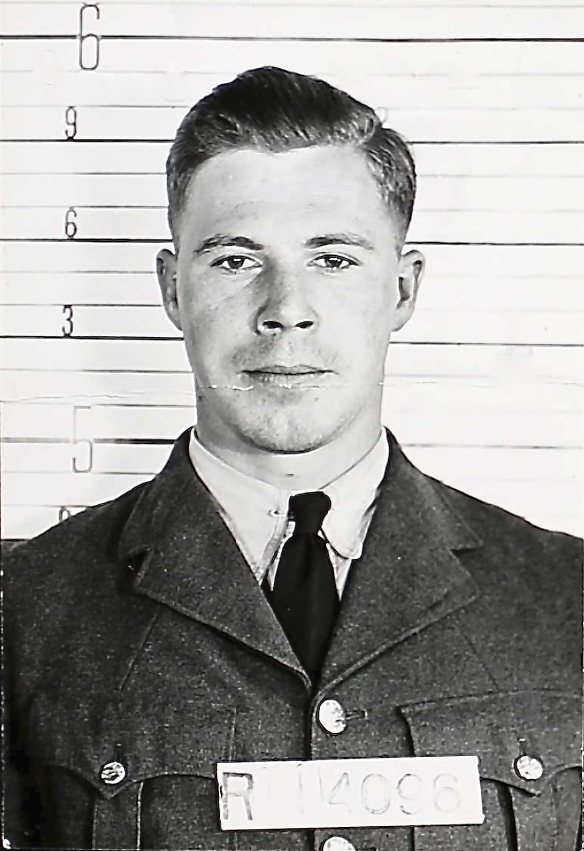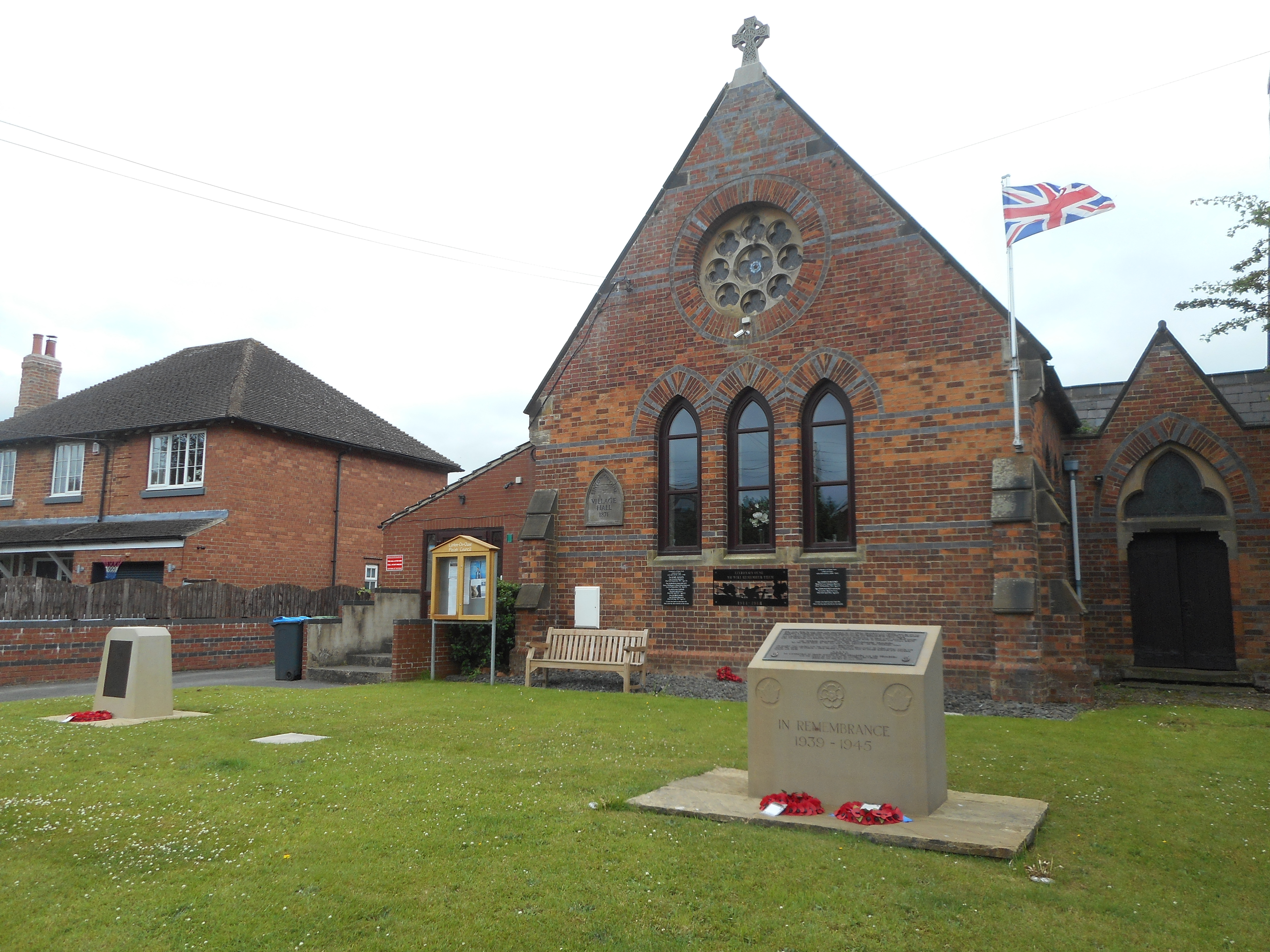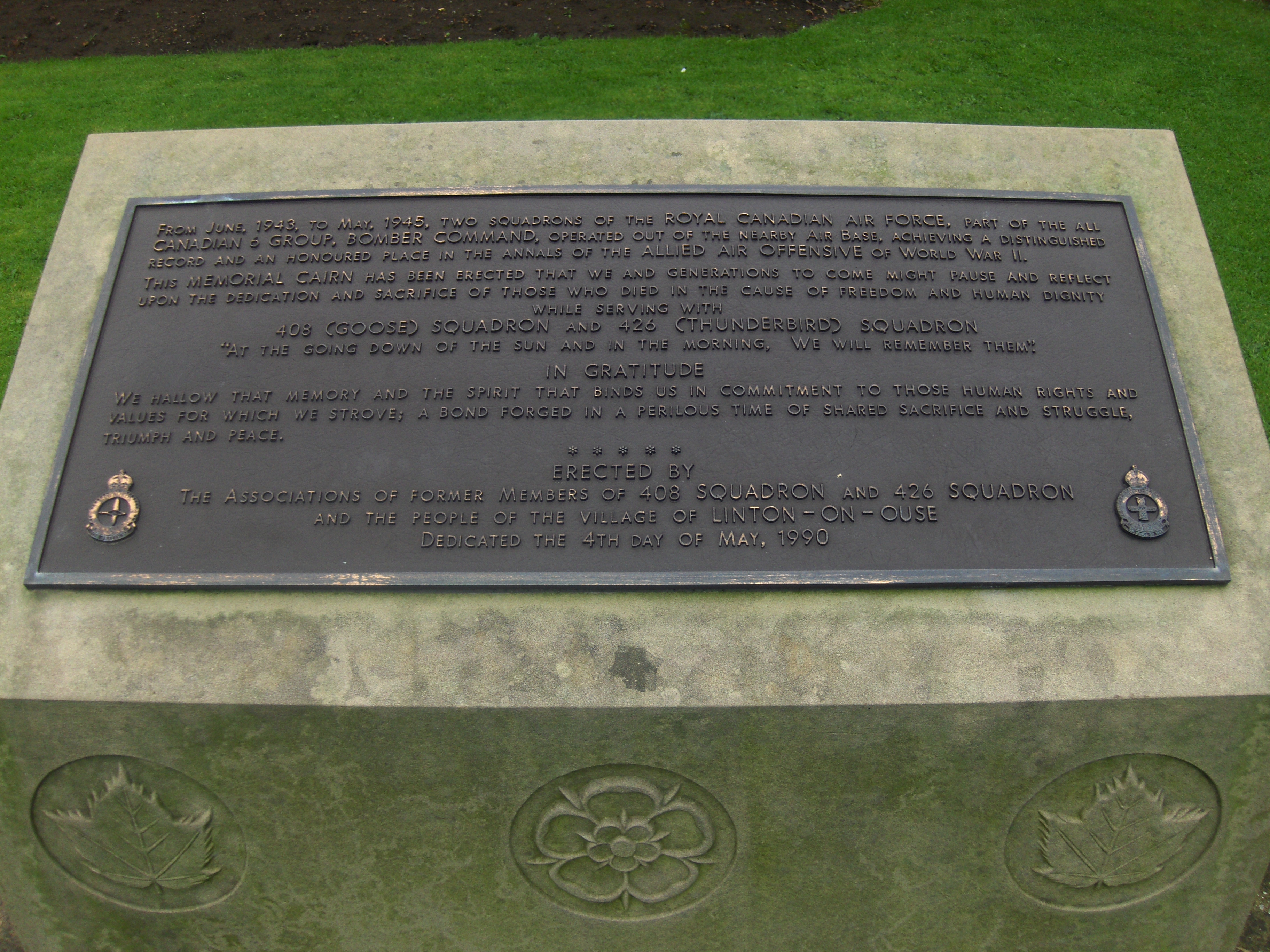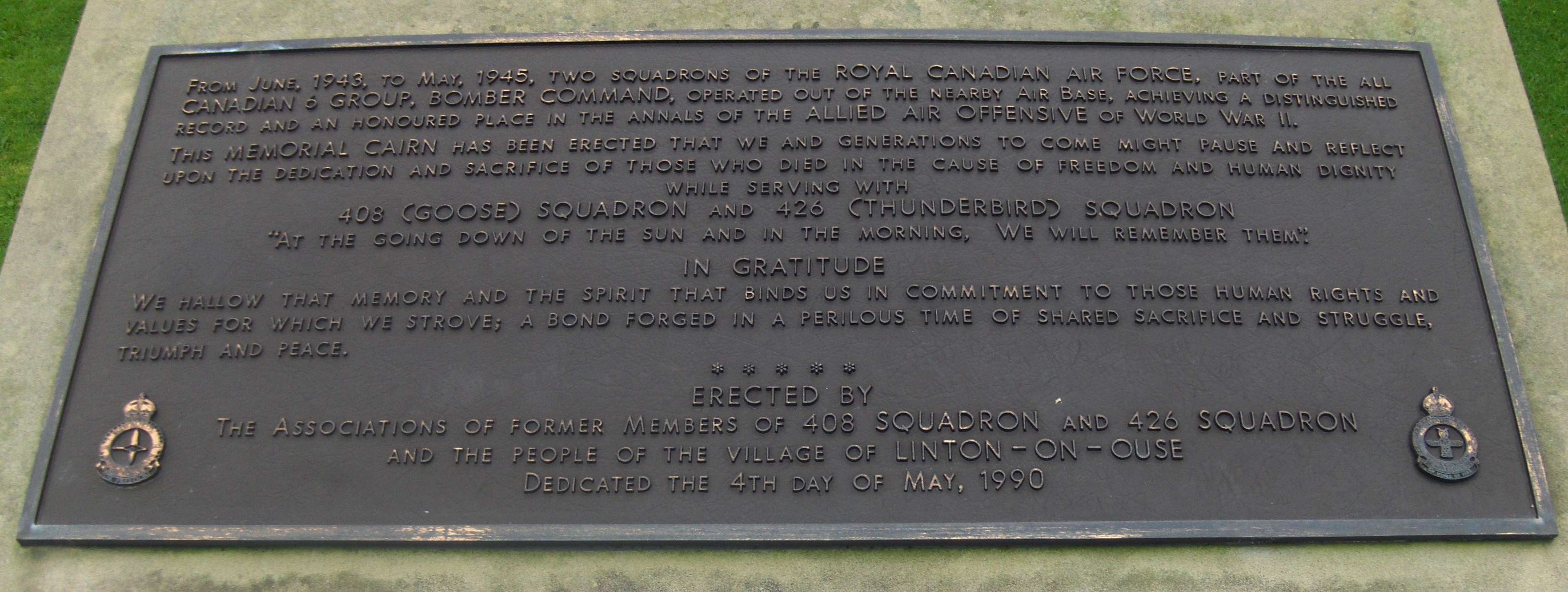Young, Robert Allen
Personal Information
| Rank | WO2 |
| Forename(s) | Robert Allen |
| Surname | Young |
| Gender | M |
| Age | 25 |
| Date of Death | 03-11-1943 |
| Next of Kin | Son of Harry Elmer Young and Helena Evelyn Young (née McLellan), of Stamford, Ontario. |
Aircraft Information
| Aircraft | Avro Lancaster II |
| Serial Number | DS774 |
| Markings | EQ-F |
Memorial Information
| Burial/Memorial Country | United Kingdom |
| Burial/Memorial Place | Runnymede Memorial |
| Grave Reference | Panel 181. |
| Epitaph |
IBCC Memorial Information
| Phase | 2 |
| Panel Number | 270 |
Enlistment Information
| Service Number | R/114096 |
| Service | Royal Canadian Air Force |
| Group | 6 |
| Squadron | 408 (Goose) |
| Squadron Motto | For freedom |
| Trade | Pilot |
| Country of Origin | Canada |
Other Memorials
| Location | Village Centre, Linton on Ouse, North Yorkshire |
| Country | United Kingdom |
| Memorial Type | Stone Memorial and inscribed slate tablet |
| Memorial Text | In memory of 408 (Goose) and 426 (Thunderbird) Squadrons of R.C.A.F |
Miscellaneous Information
| Robert was born on 9 June 1918 at Niagara Falls, Ontario. His father was born at Perry Station, Ontario and worked as a Rigger and his mother (died 1927 aged 35) was born at Fonthill, Ont. He had a brother John and four sisters- Kathryn, Margaret, Gladys and Jean. The schools Robert attended were No.4 Stamford. 1924-1933 (General course) and Stamford Collegiate 1933-1936 (vocational Science Course). His sport interests were hockey, softball and tennis, he enjoyed motorcycling and was also an aircraft pilot. Robert worked for K.MacLeod, Stamford, as a farm hand 1936-1938, then worked at a tobacco farm, 1938-1939 and then for North American Cyanamide as a crane operator from 1939 onwards. He also spent some time with the Royal Hamilton Light Infantry at Brantford. |
| He enlisted on 28 June 1941 and after training embarked from Canada for the U.K. on 28 October1942, arriving at 3PRC on 5 November 1942. He then went on to 18 (P)AFU 17 November 1942, 23 OTU 23 March 1943, 1659 CU 12 June 1943 and 408 Squadron 8 July 1943. |
Commonwealth War Graves Commission
The National Archives
| Record of Events (Operational Record Book) AIR 27/1797/20 |
| Summary of Events (Operational Record Book) AIR 27/1797/19 |
Fellow Servicemen
Please note that this list gives all the losses aboard the quoted aircraft and occasionally these may have occurred on an earlier date when the aircraft was not itself lost. Please check the dates of death carefully.
Last Operation Information
| Start Date | 03-11-1943 |
| End Date | 04-11-1943 |
| Takeoff Station | Linton-on-Ouse |
| Day/Night Raid | Night (37% moon) |
| Operation | Düsseldorf. 589 aircraft, 7 losses (3.1%). The local report is sparse, no doubt due to the sheer onslaught they had received in recent weeks. There was, however, extensive damage to both industrial and residential buildings. This was the first raid to include the G-H blind bombing system, who whilst acting as part of the main force attempted to bomb the Mannesmann tubular steel works in the city. Of the 38 aircraft so quipped, 5 returned early and two were Lost On 16 of the remaining aircraft the equipment failed to function correctly, leaving only 15 to bomb the factory. The local report does mention that 'several assembly halls were burnt out' so the experiment was a qualified success. |
| Reason for Loss | Presumed Lost off the Dutch coast |



